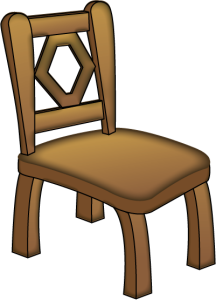Do you want to breathe life into your novel? If so, use active verbs. It’s the active verbs that show something is happening. These are the strongest verbs. All other verbs come under the category of the “to be” verbs.
Static vs. Active
 The to be verbs are weak because they’re static rather than active. You can see the contrast in the two examples here:
The to be verbs are weak because they’re static rather than active. You can see the contrast in the two examples here:
Carly was sitting in the chair.
Carly sat in the chair.
The exchange of the static verb was for the action verb sat, makes all the difference. If you want to incorporate a bit more action and sharpen the visual you might write:
Carly slumped in her chair.
Or:
Carly shoved back the chair with a slam.
These are verbs that show something happening as they draw the reader into the scene.
Worst Culprit
Of all the to be verbs the worst culprit is had. That’s why I used the phrase in the title: the Bad “Had” Habit. So why do I say this is the worst one? It’s because it’s not only static, it’s a static state in the past. So it literally has two strikes against it.
She had ridden her bike for two hours.
After the meeting had been dismissed, Mary hurried out the door.
What’s introduced here is a jerk in the story. It yanks the reader out of the present action and thrusts him back into past history. You may be thinking that the jerk is brief and momentary, and that’s true. But the use of had can become a bad habit. By introducing enough hads in one paragraph, everything grinds to a halt. You’ve bogged the reader down in past history.
While the reader may not be able to articulate what happened, it caused an uncomfortable disruption in an otherwise enjoyable reading experience.
No one can change what has already happened, so you don’t want to waste too much story time in moving backward. What the reader wants is forward motion; present action.
What’s the Remedy?
 The trick to eliminating as many hads as possible is to bring the past forward into the present. At least you’ll be describing what happens in past tense instead of past perfect tense. Let’s go back to that sentence about Mary and the meeting. Try this on for size:
The trick to eliminating as many hads as possible is to bring the past forward into the present. At least you’ll be describing what happens in past tense instead of past perfect tense. Let’s go back to that sentence about Mary and the meeting. Try this on for size:
The moment Mary heard the gavel hit, and heard the words “meeting adjourned,” she hurried out the door.
Compare the amount of action in the second example, to the lack of same in the earlier example.
Use of Had in Flashbacks
As with any novel-writing techniques, you’ll run into exceptions. I’m certainly not trying to advocate the total elimination of the verb had. After all, there’ll be flashbacks in your story from time to time. But even then, once you establish the transfer into the past (the flashback), one or two hads are sufficient to let the reader know there’s been a time shift. Keep in mind that the continual use of had throughout the flashback is unnecessary and, as I mentioned previously, will only serve to bog down the story flow. (I won’t go into detail here about flashbacks. That’s another lesson.)
Break the Habit
As you progress in polishing your novel-writing abilities, pay close attention to verb usage throughout. Once you become aware – once you are on the lookout for the culprit had – you’ll discover whether or not you have a bad had habit. And if so, you can take steps to break the habit.


 The Norma Jean Lutz Classic Collection now has three 3 available titles:
The Norma Jean Lutz Classic Collection now has three 3 available titles:
Flower in the Hills, Tiger Beetle at Kendallwood, and Rockin’ Into Romance
These clean teen reads, while authored in the past, offer timeless story lines that teens love.


